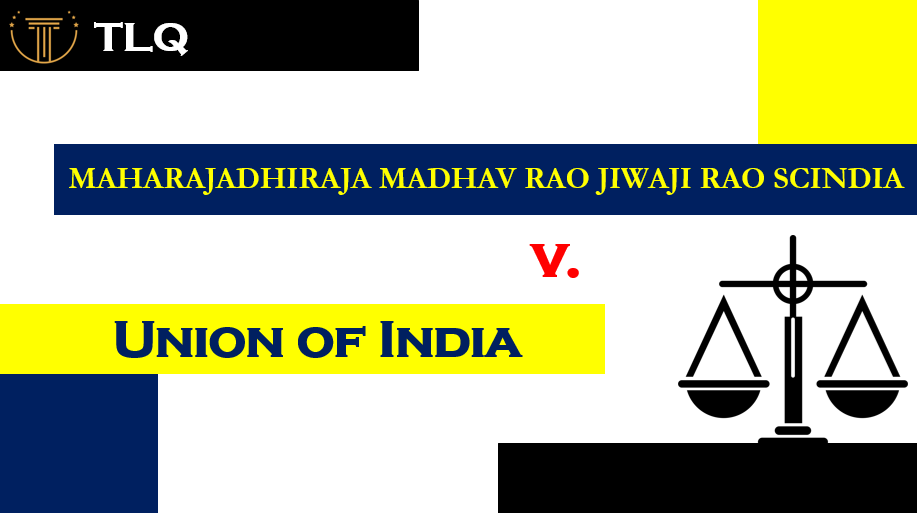Published On: 1st September, 2024
Authored By: Daksh Jhinga
Narsee Monjee Institute of Management Studies Chandigarh
PARTIES IN DISPUTE:
- a) Jayantilal Verma Appellant
- b) State of Madhya Pradesh Respondent
2) CORAM:
- a) Justice Sanjay Kishan Kaul
- b) Justice Hrishikesh Roy
3) Facts:
- The deceased Sahodara Bai had married the accused appellant, Jayantilal Verma eight years prior to the incident. They even had a few months old son.
- On 24th August, 1999, Sahodara Bai was found dead on a cot in her matrimonial home located in village Uslapur, District Rajanandgaon, Madhya Pradesh (now Chhattisgarh). On behest of one of her brothers, a marg intimation was lodged. The deceased’s brother had gone to meet his sister, where her in laws informed him of her death.
- Deceased’s brother related a prior incident and alleged that the deceased’s in-laws had been harassing her because she attempted to speak to the accused appellant’s brother’s wife. Even at the stage of reconciliation, her in-laws asked for time to decide whether or not they wanted the deceased to stay with them.
- An FIR was lodged and postmortem was conducted. The post mortem report stated that the cause of death was asphyxia due to strangulation, and the nature of death was homicidal.
- The accused stated that all three of them had gone out to the fields while only the deceased had stayed back home. When the appellant’s father returned, he discovered the deceased lying dead on a cot. He then called his wife (appellant’s mother).
- All three accused were convicted by the Session’s Court. The convictions were made on the basis of the deceased’s brother’s statement and postmortem report.
- Other forms of death such as due to theft, snakebites, suicide theory and etc, was also ruled out by the Sessions’s Court and the accused’s conviction was based upon circumstantial evidence.
- The accused preferred an appeal to the High Court against the decision of the session’s court. During its pendency, the father of the appellant, also an accused, passed away. Further, the Hon’ble High Court acquitted the mother of the appellant on the grounds of absence of legally admissible evidence. The appellant’s conviction was, however, upheld by the High Court.
- On 30th March, 2015, the Hon’ble Supreme Court of India granted leave to the appellant to file an appeal before it. During the trial, the Supreme Court re-observed the High Court findings such as that the statement of the deceased’s brother (who was prosecution witness) was natural, was her stepbrother and had no prior animosity with the appellant’s family. Her real brother (also a prosecution witness) had turned hostile allegedly due to family relationships as his brother was married to the appellant’s sister.
- The circumstantial evidence was examined closely thoroughly because it could be the only basis of conviction. The High Court found that there existed a complete chain to prove the guilt of the accused, that is, deceased’s visit to her maternal home, her statement regarding the ill-treatment by her in-laws to her brother, her being taken to the matrimonial home by her stepbrother along with another brother, the discussion between deceased’s stepbrother and appellant’s father and lastly, the cause of death being homicidal; these circumstances were examined to establish the guilt of the accused. The High Court further held that after the murder, appellant’s father sent his wife and the appellant fields, while he himself went to the pond to bathe. When he returned to his house, raised a hue and cry, and pretended to be shocked by the sudden death of the deceased. Further, while there was a possibility of death being caused by strangulation by an article made of a chain-like material, but the same had likely been destroyed. The High Court had also criticised the manner of prosecution.
- The High Court also noted that as per the findings of the postmortem report, there was blood from nose and mouth of deceased, swelling on right cheek, bruises and depression marks and etc. Supreme Court stated that since the incident took place inside the privacy of the house, the onus was on the persons residing in the house, to give an explanation. It also noted that it is difficult for the prosecution to lead any direct evidence to establish the guilt of the accused. Referring to Sec 106 of the Indian Evidence Act, 1872, the Court opined that in such cases, the initial burden upon the prosecution to establish the case is of relatively light character. There would be a corresponding burden on the residents of the house to give explanation as to how the crime was committed and cannot get away by keeping quiet and offering no explanation.
4) Contentions of Appellant:
- a) The appellant contended that the circumstantial evidence was not of conclusive nature, and the chain of evidence was not complete to pronounce him guilty. The previous allegations of cruelty had not been proved as there was no prior complaint of harassment lodged by the deceased or her relatives and that the testimony of stepbrother should be discredited because he is not the real brother of the deceased. He stated that no intention or motive was stated to be attributable to the appellant to kill the deceased and the prosecution could not absolve itself of the burden to prove the case beyond reasonable doubt. He further contended that the weapon of crime was never recovered and that his mother was acquitted on the basis of this evidence.
5) Contentions of State (Respondent):
- a) Respondents relied upon the absence of any explanation by the accused regarding the cause of death, even though the death had occurred in the privacy of the matrimonial home. The appellant and his family were stated to be the only residents, where the body of the deceased was found and that itself cast a burden on them within the meaning of Section 106 of the Evidence Act. The State further relied upon prior judgments, particularly the case of ‘Trimukh Maroti Kirkan v. State of Maharashtra’ which was related to the factual scenario of present case. Further, State emphasised that the other witnesses turning hostile cannot be a ground itself to acquit the accused and that statement of deceased’s stepbrother was consistent and sufficient to convict the accused. State also contended that it is the quality of evidence and not the number of witnesses, which is relevant.
6) Relevant provisions of law:
- a) Section 106 of Indian Evidence Act 1872
- b) Section 134 of Indian Evidence Act 1872
- c) Section 302 r/w Section 34 of Indian penal Code 1860
- d) Section 313 of Code of Criminal Procedure
7) Decision of Supreme Court:
The Court held that it is unable to find any reason to interfere with the judgment of passed by the earlier courts and dismissed the petition, thereby upholding the conviction of the accused appellant. The Hon’ble Supreme Court further stated that there is no doubt that a large number of witnesses turned hostile and the Trial Court was also not happy with the manner of prosecution conducted this case, however, that is not an unusual event in the prolonged trials in our country and that in the absence of any witness protection scheme of substance, one has to examine whichever evidence is capable of being considered, and then decide whether or not it would suffice to convict the accused. The rationale adopted by the Court for coming to the conclusion behind the reason for the real brother of the deceased turning hostile while step brother standing his ground was also appreciated, that is, to preserve the close family ties which continue to exist by marriage. It observed that in the Indian context, there exists a continued relationship between two families wherein the daughter-in-law comes from another house. No explanation has been given as to how the wife could have received the injuries and this was a strong circumstance indicating that appellant is responsible for commission of the crime, and mere denial of explanation cannot be an answer. Further, according to the Court, the most significant aspect was where the death was caused and where the body was found. In this regard, it was in the house where only appellant and his family was staying. Even the High Court had observed that it was not possible for someone from outside to enter the house and strangulate the deceased without any commotion being caused.


